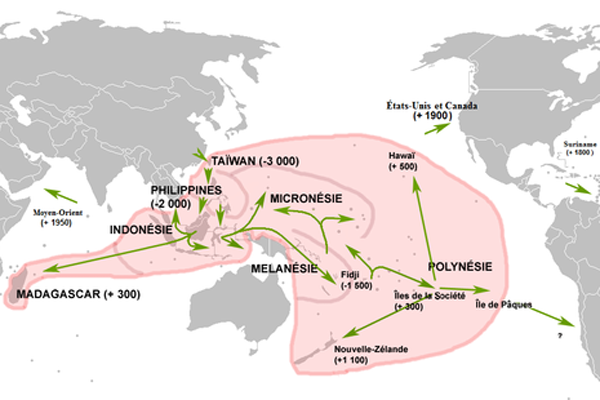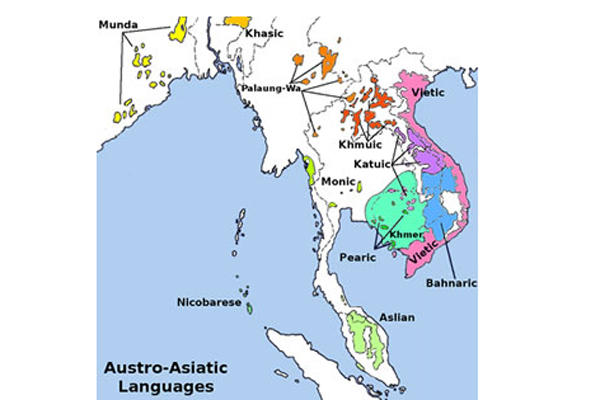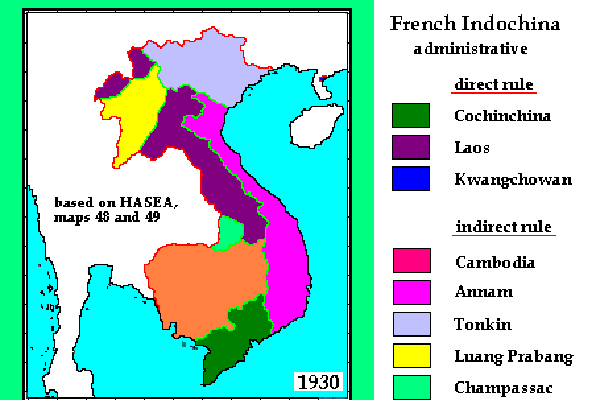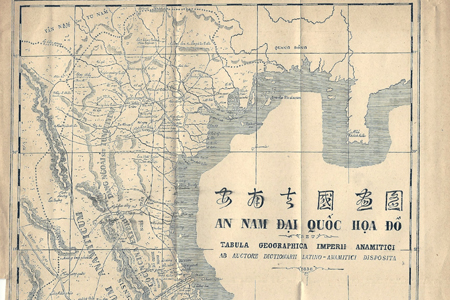The terminology of human sciences includes quite a few often misleading ambiguities. This stems from the fact that a word was coined to express a certain notion. As time passed, its meaning expanded and changed to the point that the signified outgrew the significant.
Concerning the history and culture of Southeast Asian countries, I would like to

supply a few examples, the words Indonesian, Insulinde (in French), Indochina Annam.
Indonesian: this word comes from Indo (from India) and nesian (relating to islands), and thus signifies "relating to the islands of India".
1) Geographically, owing to its etymology, it cannot properly designate the present entity Indonesia, just as Insulinde (insular India) cannot mean the insular group comprising Indonesia and the Philippines. The term Indonesia created by the German ethnologist Adolt Bastian has become more and more ambiguous, often inappropriate, in the present situation of archaeological research in Southeast Asia.
2) Ethnologically, "Indonesian" is often synonymous with "Austronesian" (Nam Dao in Vietnamese). It designates the body of languages of the western branch of the Malayo - Polynesian linguistic family (between Madagascar in the west, Taiwan in the north, and limited in the east by the eastern branch comprising Melanesian and Micronesian languages).
3) In anthropology and archaeology: Formerly, French scholars used the word "Indonesia" as a generic term for a large number of tribes living in the highlands of Indochina, whose habitat covers the Truong Son range (Chaine Annamitique on old French maps) and even extends as far as Sumatra; they regarded them as proto

-Indochinese, who were also called by derogatory words: Moi in Vietnamese and Kha in Thai. It seems that the word "Indonesian" is used today to designate the pre- and proto-historical populations of southern Asia whose habitat covered China, south of the Yangtse and eastern Indochina. This is misleading because those populations came neither from India nor from the islands. They had settled since long in that area of which they were the racial substratum. One could call them Austroasians. According to one hypothesis, they had split into two groups: the Austroasiatics (Nam A luc dia) who are believed not to have left the Asiatic continent, and the Austronesians (Nam Dao) who had migrated to the islands. The ancient Viet (now the majority ethnic group of Vietnam) are part of the Austro-Asiatic group. In any event, from the anthropological and archaeological points of view, there are no Indonesian, and even Malay race, so-called Malay people being the result of interbreeding, particularly in Indonesia. According to Pierre Fistie, the term: "Indonesians" applies to groups sprung from the interbreeding between older elements (Australian Aborigines, Papuans) and Malay invaders.

Indochina: This term sometimes leads to confusion. According to Robert dictionnaire d’aujourd’hui, it may designate "former French colonies conquered in the reign of the Napoleon III: Cochinchina, Annum, Tonkin, Cambodia and Laos". Thus the Indochina War essentially designates the war of independence fought by the Vietnamese (1945-54) ending with the Dien Bien Phu victory. In fact, geographically, the word has a more extended meaning. It designates the Southeast Asian peninsula comprising Burma, Laos, Thailand, Cambodia, Vietnam and the eastern part of Malaysia. Indochina constitutes the continental part of Southeast Asia.
That word, which designates the countries lying between India and China, like the words Indonesia and Insulinde which refer to India, is tinged with (academic) Eurocentrism, Sinocentrism and lndocentrism. Alluding solely to the two giants of Asia, they obscure the existence of the original cultures of Southeast Asia even before the impact of India and China. Those Southeast Asian cultures were eroded, some destroyed, or forgotten (e.g. the case of Angkor) because of historical upheavals, particularly, the onslaught of western colonialism. Today, we are witnessing their revival, and the recent fact of Vietnam joining ASEAN is but a reaffirmation of that historic trend.
Annam: Ah, that word! According to the Petit Robert dictionnaire de culture general (revised edition, 1991), it designates "the part of Central Vietnam bordered in the west by the Chaine annamitique, in the east by the South China Sea, in the north by Tonkin and the south by Cochinchina".
But for a long time - at least for fifty years since Vietnam liberated itself from French rule (1945) and became independent, the word Annam has no longer been used to name that part of Central Vietnam as it was under the French administration (today, it is called Trung Bo). Annam (Pacified South) was originally a word created by the colonial administration of the Chinese Tang, to designate the whole of Vietnam. This meaning was to persist, except for brief periods, until the early 19th century: in 1804 the country was called Vietnam in its diplomatic relations with China, although in practice, the Chinese did not give up the appellation "Annam". The French colonists also used this term to designate the whole of Vietnam while dividing the country into three parts with "Annam" in the middle. After the 1945 revolution, the term "Annam" was discarded owing to its connotation of the servitude (Pacified South) and the name "Vietnam" adopted.



